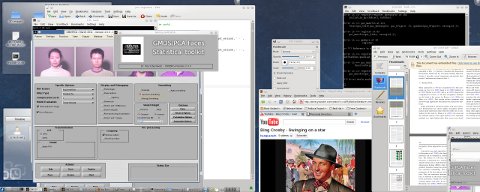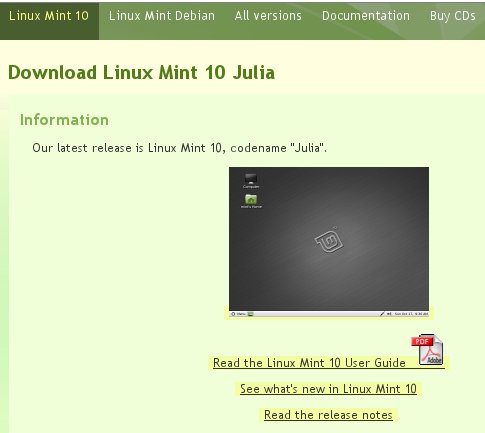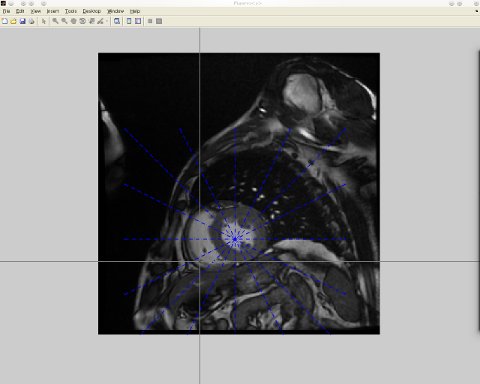Developing With Fedora 11
 EDORA 14 was a bit of a mixed bag, but it was definitely an improvement compared to previous versions. I’ve used it since it was released (and blogged quite a lot about it). At the moment I use an older version:
EDORA 14 was a bit of a mixed bag, but it was definitely an improvement compared to previous versions. I’ve used it since it was released (and blogged quite a lot about it). At the moment I use an older version:
bash-4.0$ uname -a Linux [XXXXX] 2.6.30.10-105.2.23.fc11.i686.PAE #1 SMP Thu Feb 11 07:05:37 UTC 2010 i686 i686 i386 GNU/Linux
Not to worry, it’s up to date and it runs the latest KDE. The general impression has been positive, having worked on this operating system for the past week or so (still awaiting my Ethernet’s return, so working from a lab, not via SSH). A few remarks about the weak spots:
- X (org/server) blows up under particular circumstances where a newer version of X might be expected. If an attempt is made to invoke it from a remote host (SSH with X forwarding), the whole of Fedora blows up and the session must be restarted. If run locally, the same type of X issue simply raises a hardware-based exception and produces a major warning, then gives the option to gracefully shut down the affected program. It’s not good, but it’s definitely better than the former scenario, which is reproducible by the way.
- Dual-screen handling is fantastic. It is still a plug-and-play experience, even with Fedora 11 in place.
- There are far too many visual artefacts and drawing bugs (direct rendering is lacking). Again, this may just be the fault of old X and nothing whatsoever to do with the drivers of this GPU (Fedora seems to favour free drivers).
Aside from X rants, this platform is fantastic for development. Everything has worked well so far, except Firefox with occasional crashes (occurring at least once a day).
Is Fedora ready to become the most widespread GNU/Linux desktop? Probably not yet. But for development? Sure, why not? Fedora 14 is more mature, but that too has some wrinkles which I covered here before.
By the way, the screenshot at the top (click to zoom) shows the application I’ve been developing recently. More details will be published shortly as blogging distracts from persistent coding, and vice versa.






 Filed under:
Filed under: 
 oday I set up my alternative machine in a way which enables me to get the best of GNOME and KDE. It was set up in a way that I never tried before. Back in 2001 or thereabouts I would have gnome-panel imported into my desktop session (from another computer) and I repeated this type of practice locally around 2005-2007 when I wanted my KDE desktop to also have gnome-panel and therefore allow easy access to GNOME-side administration tools or applications. Today I tried something different altogether by installing KDE alongside GNOME and then running plasma-desktop in GNOME, which obviously imported panels and the background utilities, including 2 folderview plasmoids that import directories over SSH (the remote server on which I run workloads).
oday I set up my alternative machine in a way which enables me to get the best of GNOME and KDE. It was set up in a way that I never tried before. Back in 2001 or thereabouts I would have gnome-panel imported into my desktop session (from another computer) and I repeated this type of practice locally around 2005-2007 when I wanted my KDE desktop to also have gnome-panel and therefore allow easy access to GNOME-side administration tools or applications. Today I tried something different altogether by installing KDE alongside GNOME and then running plasma-desktop in GNOME, which obviously imported panels and the background utilities, including 2 folderview plasmoids that import directories over SSH (the remote server on which I run workloads).

 ORKING with bare metal for the purpose of maximal hardware utilisation and performance is not the same as working with typical computer programs. Developing software for research is also different from software development for end users, where the software is treated as a product. Different scenarios require different methodologies and different levels of polish, and thus have different specifications and priorities. In research, brute force becomes essential to the success of one group or another.
ORKING with bare metal for the purpose of maximal hardware utilisation and performance is not the same as working with typical computer programs. Developing software for research is also different from software development for end users, where the software is treated as a product. Different scenarios require different methodologies and different levels of polish, and thus have different specifications and priorities. In research, brute force becomes essential to the success of one group or another. ESTERDAY I encountered my first major setback in Octave for Kubuntu. It was a bug, not a missing feature. It involved an outside library again. I tried installing a newer version of gnuplot (installing the latest one by compiling the source code), but this did not resolve the issue. All in all, over an hour was spent on it, first assuming that I was coding wrongly and later realising that
ESTERDAY I encountered my first major setback in Octave for Kubuntu. It was a bug, not a missing feature. It involved an outside library again. I tried installing a newer version of gnuplot (installing the latest one by compiling the source code), but this did not resolve the issue. All in all, over an hour was spent on it, first assuming that I was coding wrongly and later realising that 

